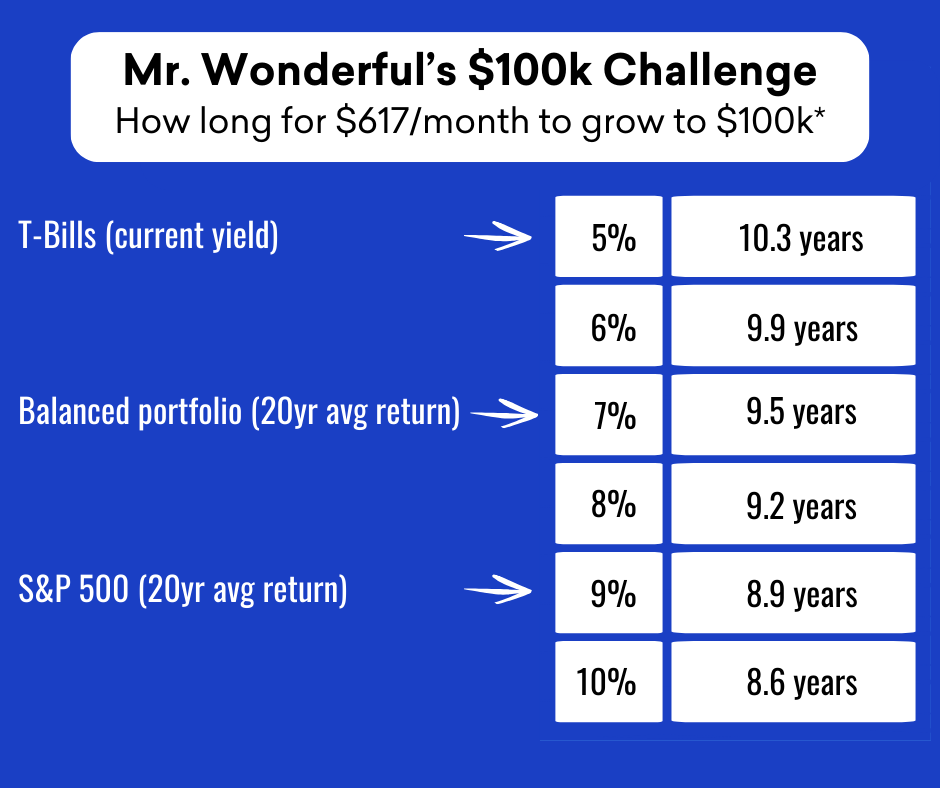Kevin O’Leary, often referred to as “Mr. Wonderful” and recognized for his keen financial prowess, set forth a challenge for the modern young adult: Can you set aside $100,000 by the time you’re 33? Far from being a whimsical dream, O’Leary recently took to social media to offer this as a test of financial discipline. If you’re over 33, know that his advice applies to you as well. This challenge can serve as a wake-up call to review, reassess, and reinforce your financial strategies, proving it’s never too late to build the right investment habits. Are you ready to take it on?
Understanding the $100,000 Challenge
IIt’s not just about the number; it’s about what it represents:
- Strengthening Your Investment Muscle: Achieving this milestone establishes a foundation, priming you for continued investment successes throughout life and into retirement.
- Financial Resilience: With $100k tucked away, you’re better equipped to handle unexpected economic downturns or sudden emergency expenses.
- A Head Start: This sum equips you for significant life purchases, be it a house down payment or capital for a new venture. It paves the way for leveling up or providing an accelerated path to retirement.
O’Leary’s 20% Strategy: The Backbone of the Challenge
At the heart of O’Leary’s challenge is the 20% rule. With an average U.S. salary for a young adult (20-24) hovering around $37,024, how does consistently setting aside a 20% of your take home pay lead to $100,000 in savings within a set time frame?
The Math Behind the Challenge
To break it down, if $37,024 is the average yearly take home pay, 20% of the monthly amount translates to roughly $617 per month to invest.
Now, here’s where the dynamics of compound interest and growth come into play. The chart below provides insight into how swiftly a monthly contribution of $617 can snowball to $100k, given different hypothetical rates of return. It could take up to 10 years, so it’s good to get started young!

To help conceptualize, here are a few reference points for different rates of returns.
- 5% is roughly the current T-Bill yield following a number of recent interest rate hikes.
- 7% is roughly the average return for a Balanced (60/40) Portfolio Returns over the past 20 years.
- 9% is roughly the average annualized return of the S&P 500 over the past 20 years.
It’s pivotal to note that while instruments like T-bills are safer, their returns are more modest. On the other hand, avenues like the S&P 500, dominated by equities, offer higher potential returns but come with heightened volatility.
Embracing O’Leary’s Challenge
O’Leary’s idea isn’t just about reaching a number. He’s encouraging a disciplined approach, offering a firsthand look at the results of informed investing, and demonstrating what can be achieved with the right mindset.
*Sources: Beanstox. Bureau of Labor Statistics Data. Median salary of a 20- to 24-year-old in 2022 is $37,024. Investment of $617/month is (20% x $37,000/12). T-Bill Yield (5.28%) as measured by iShares 0-3 Month Treasury Bond ETF 30 Day SEC Yield as of 9/30/2023. There are no assurances that this yield will be sustainable in the future. YCharts. Balanced Portfolio Total Return (7.28%) as measured by 60/40 Benchmark (BMRK). S&P 500 Total Return (9.71%) as measured by S&P 500 Total Return Index (SPXTR). Data as of 9/30/2023.
Disclosures: These projections show hypothetical examples of compounding over time, based on monthly contributions of $617 with various assumed growth rates, compounded monthly and assuming the funds stay invested throughout the investment period. Returns are hypothetical annualized returns, assuming a properly diversified investment portfolio. Performance is provided for illustrative purposes, and it is not indicative of past performance or any Beanstox portfolio or any client’s experience using the Beanstox App. The returns do not reflect fees or the cost associated with investing. Content is meant for education purposes on the power of compound interest over time, and it is not intended to be taken as advice or a recommendation for any specific investment product or strategy.
